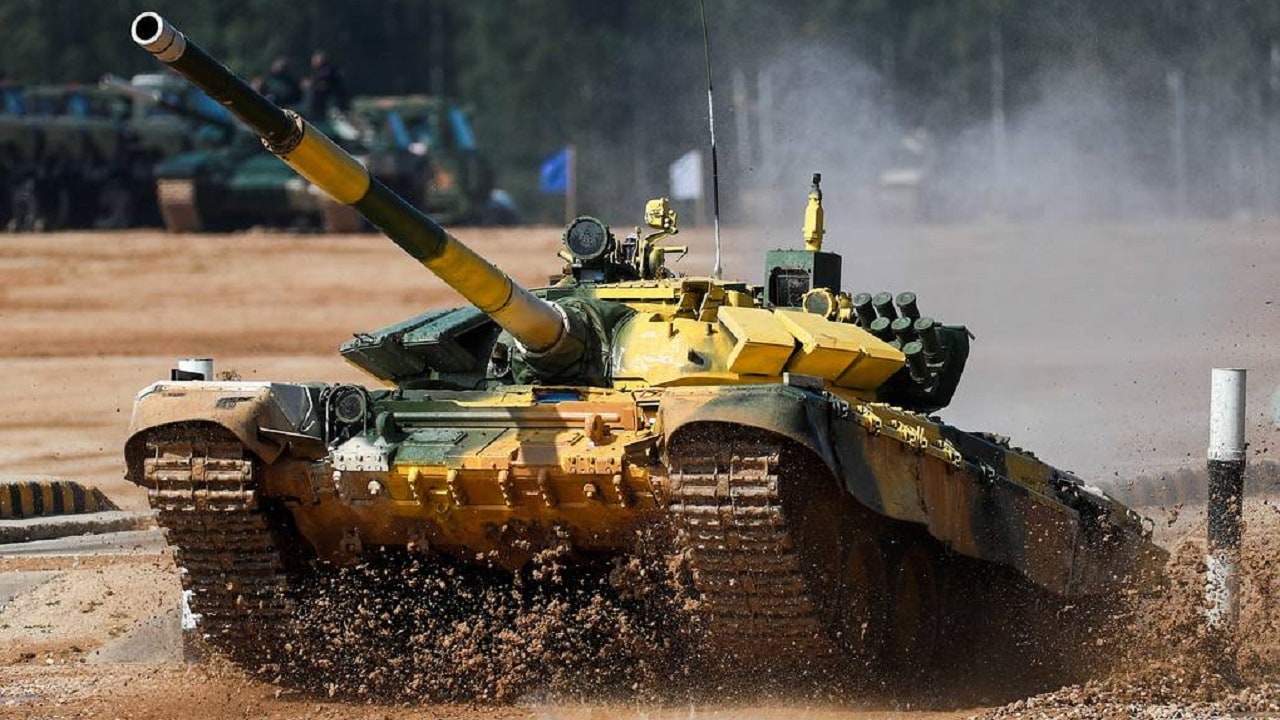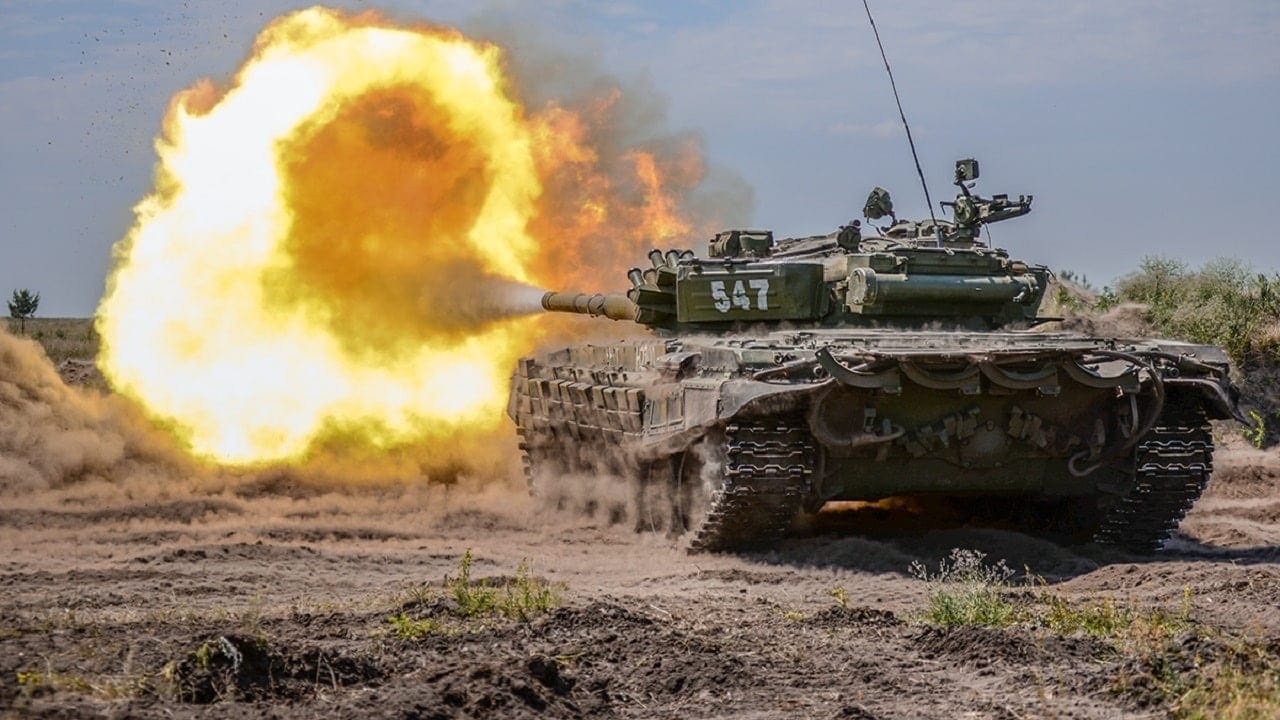Key Points and Summary: India is retiring its outdated T-72 tanks, including over 2,400 “Ajeya” models, and replacing them with indigenously developed Future Ready Combat Vehicles (FRCVs).
-This ambitious program aims to deliver a modern main battle tank with advanced mobility, protection, and firepower by 2030.
-Seventy percent of funding will come from the government, with private industry contributing the rest.
-Despite challenges, including limited experience with large-scale defense procurement, this initiative is crucial for India’s defense modernization.
-The FRCV is expected to bolster India’s tank fleet, replacing a platform that struggles against modern threats like anti-tank missiles and kamikaze drones.
India Retires T-72 Tanks: A New Era with Future Ready Combat Vehicles
The Indian army has finally come to its senses and will move on from the Soviet-era T-72 tanks it has in abundance.
It announced last year that it will retire hundreds of the Russian main battle tanks. The Indians have operated a variant of the T-72 since the 1970s.
It is difficult to believe that the armored vehicle has endured such a long service record, so the Indians are correct to begin removing the tanks from active service.
The Indians have many T-72s called the “Ajeya” version. There are a whopping 2,414 Ajeyas that have been in service for decades. It is almost like India forgot that its tanks were so old.
Future Ready Combat Vehicle Is the Answer
Instead of T-72s, the Indians are looking to transition to a new tank that will come into service by 2030.
This is called the Future Ready Combat Vehicle (FRCV) program, and New Delhi hopes to create an indigenously produced model that will give its military a glow-up.
The Indians are taking a creative process for funding the new tank. Seventy percent will be financed by the Indian government, and the remaining 30 percent will be allocated to private industry.
New Attempt at a Modern Acquisition Program
The Indian Ministry of Defense is being thoughtful.

Russia’s T-72 tank drilling. Image Credit: Creative Commons.
It will select several defense contractors, allow them to build a prototype, and select the best one. Admittedly, many Western countries approach defense acquisition in this manner.
Still, it will be new for a developing economy like India, whose government is more concerned with improving the standard of living for its populace than developing an indigenous defense industrial base.
It Won’t Be Quick
It will, unfortunately, take three or four years for the prototypes to be ready. This lead time is disappointing, and the Ministry of Defense should have created a new tank many years ago.
But at least engineers and designers have embarked on the process now, giving hope for a military that could use some modernization from its homegrown defense industry.
“For modernization of the tank fleet of the Indian Army, the proposal for procurement of Future Ready Combat Vehicles has been cleared,” the Ministry of Defense said to Janes. “The FRCV will be a futuristic main battle tank with superior mobility, all terrain ability, multilayered protections, precision and lethal fires, and real-time situational awareness.”
Will This Tank Be Built on Time and Under Budget?
Even with the FRCV staying on track with no schedule slips or cost overruns, the Indian army will probably not replace all 2,414 T-72s until 2045. The Indians want over a thousand Future Ready Combat Vehicles by then.
T-72 Tanks Have Done Their Job Over the Years
The Indians have depended on their T-72s for several different contingencies over the years. Operation Blue Star in 1984 answered an uprising in Punjab.
They fought the Kargil War in 1999, and the T-72s acquitted themselves well in difficult mountainous terrain. Plus, there were numerous times the T-72 was called to service for counter-insurgency duty in Jammu and Kashmir.
This New Acquisition Project Should Have Happened Sooner
While the T-72 has enjoyed an admirable service record, the Indians should be questioned for not ordering new tanks sooner.
This outdated platform couldn’t survive on the modern battlefield against anti-tank missiles and kamikaze drones.

Russian T-72 tank. Image Credit: Creative Commons.
The Indians observed the war in Ukraine and concluded they needed to move quickly to build a new model.
But they waited too long. It will take until the 2030s for the new tank to be ready. The Indians also do not have that much experience with a modern acquisition program. They must learn as they go and try to avoid the “Valley of Death” in military procurement. That is when the concept of the arms system is fleshed out, and prototypes are made, but the program dies before new weapons can be bought in numbers.
Thus, the Indian Ministry of Defense has its work cut out. The civilians in this sector have been criticized for not delivering on procurement promises and canceling various programs. They tried to replace the problematic INSAS assault rifle in 2011. The Indians wanted 7.5 million new rifles. The requirements for the weapon were vague and difficult to follow, and the program was axed in 2015.
If your defense industry can’t make a rifle, how will it succeed in creating a tank? Hopefully, the Ministry of Defense has learned lessons from that disappointment and can forge ahead with the modernized new combat vehicle.
There is no room for failure this time, as the Indians need better tanks. It is time for the homegrown defense industry to step up.
About the Author: Dr. Brent M. Eastwood
Brent M. Eastwood, PhD, is the author of Don’t Turn Your Back On the World: a Conservative Foreign Policy and Humans, Machines, and Data: Future Trends in Warfare, plus two other books. Brent was the founder and CEO of a tech firm that predicted world events using artificial intelligence. He served as a legislative fellow for U.S. Senator Tim Scott and advised the senator on defense and foreign policy issues. He has taught at American University, George Washington University, and George Mason University. Brent is a former U.S. Army Infantry officer. He can be followed on X @BMEastwood.

